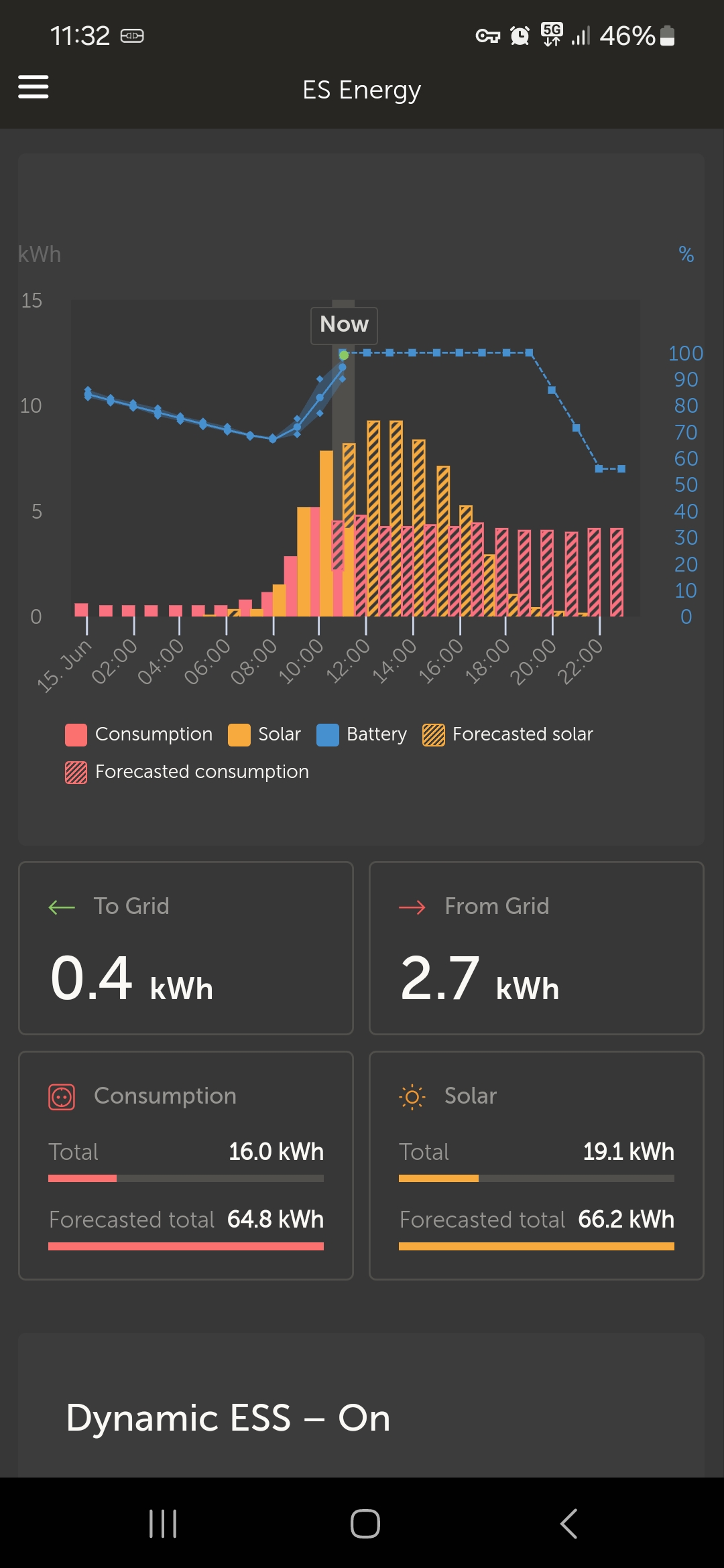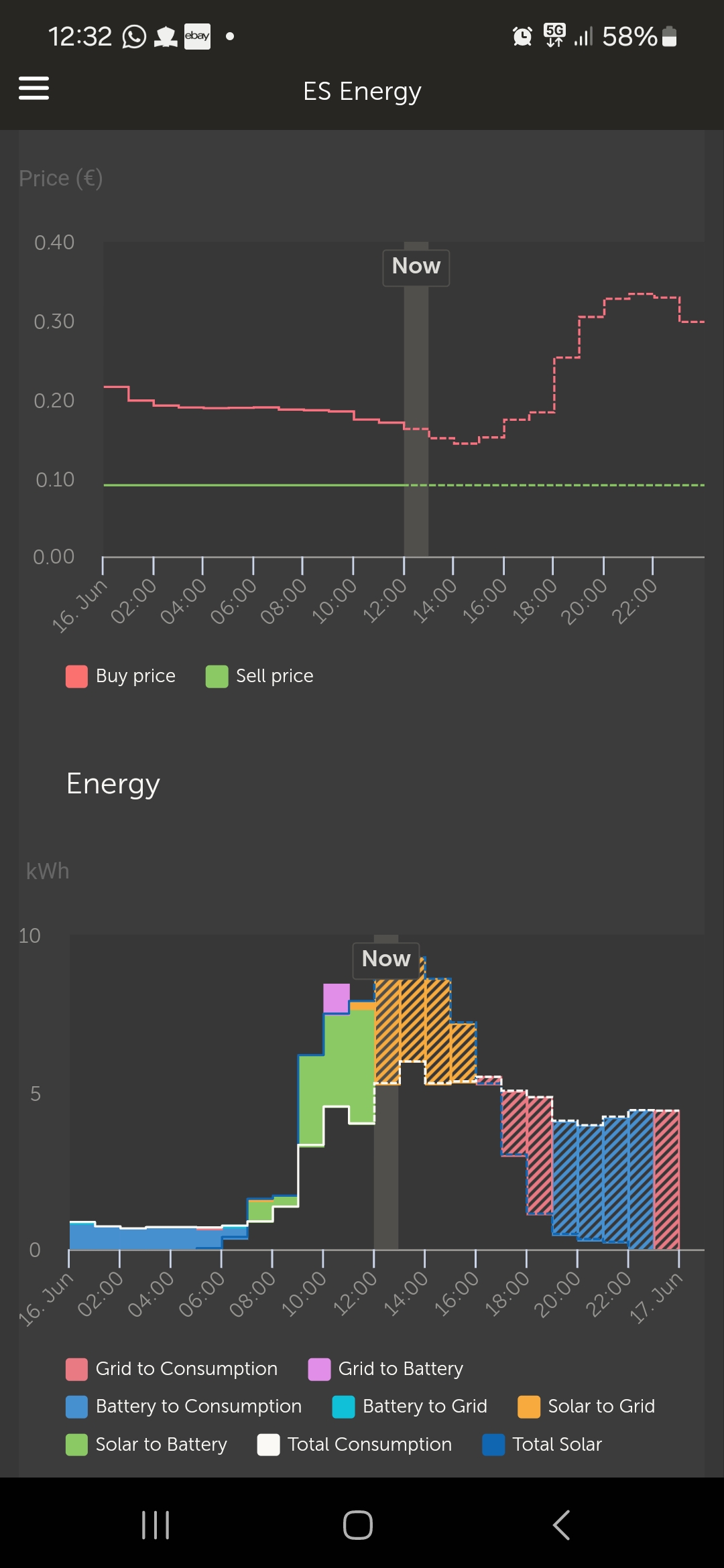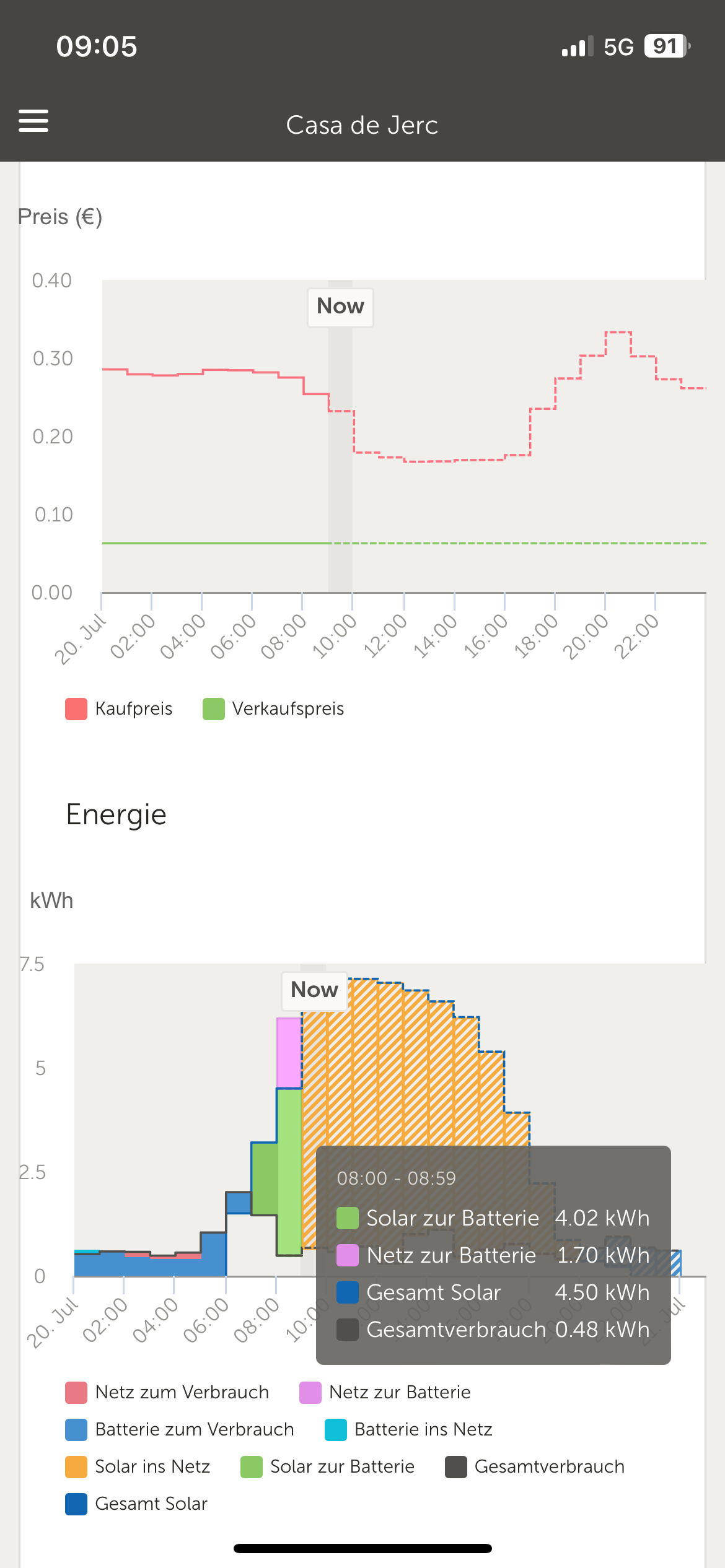I'm using DESS since a few weeks now - and occasionally it does some total unexpected Grid-To-Battery-Charging:
Example Today:
- Solar Forecast is 66 kWh
- Battery is around 83% SoC already
- Energy prices are "high", with a definitie LOW later at 2pm
Yet, DESS decided that it has to charge 2.4 kWh from grid at 10am...
Any Idea what could be a trigger for this strange behaviour?
I mean, even if there wasn't sufficent solar expected - shouldn't the grid-to-battery have been scheduled for 2pm, when energy prices are basically halfed?
This has nothing todo with accuracy of the forecasted data id say - even with the forecasted data, this is strange.







